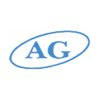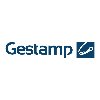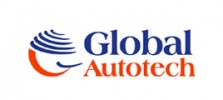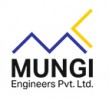Filter interviews by
Nissin Brake Interview Questions and Answers
6 Interview questions
Cycle time measures production speed; Takt time aligns production with demand. Both are crucial for efficiency.
Cycle Time: Total time to produce one unit, e.g., 30 minutes per product.
Takt Time: Available production time divided by customer demand, e.g., 480 minutes / 100 units = 4.8 minutes per unit.
If cycle time exceeds takt time, production may fall behind demand, indicating a need for process improvement.
Examp...
Petrol engines use spark ignition while diesel engines use compression ignition.
Petrol engines have higher RPMs than diesel engines.
Diesel engines have higher torque than petrol engines.
Petrol engines are lighter and more compact than diesel engines.
Diesel engines are more fuel-efficient than petrol engines.
Petrol engines emit more CO2 than diesel engines.
Diesel engines are more expensive than petrol engines.
Examp...
Petrol engine and diesel engine are types of internal combustion engines used in vehicles.
Petrol engine: Uses spark ignition to burn a mixture of petrol and air.
Diesel engine: Uses compression ignition to burn diesel fuel.
Petrol engines are lighter, quieter, and have higher RPMs compared to diesel engines.
Diesel engines are more fuel-efficient and have higher torque compared to petrol engines.
Examples: Petrol engi...
Productivity improvement activities include process optimization, automation, training, and employee engagement.
Process optimization: streamlining workflows and eliminating waste
Automation: using technology to reduce manual labor and increase efficiency
Training: providing education and skill development to employees
Employee engagement: fostering a positive work environment and encouraging collaboration
Examples: im...
Assembly line capacity and type of assembly are crucial factors in manufacturing efficiency.
Assembly line capacity refers to the maximum amount of products that can be produced in a given time frame.
Type of assembly refers to the method used to assemble the product, such as manual or automated.
Efficient assembly lines require a balance between capacity and type of assembly.
For example, a high-capacity assembly lin...
Cycle time study techniques involve analyzing and improving the time it takes to complete a process.
Identify the process to be studied
Collect data on the process
Analyze the data to identify bottlenecks and inefficiencies
Implement improvements to reduce cycle time
Continuously monitor and adjust the process
Examples include time and motion studies, value stream mapping, and process mapping
Nissin Brake Interview Experiences
12 interviews found
1. 5G communication systems: advantages and challenges
2. Role of IoT in communication systems
3. Comparison of wired and wireless communication systems
4. Network security in communication systems
5. Applications of artificial intelligence in communication systems
(5 Questions)
- Q1. Introduction and icebreakers Job specific questions Career development and goals Teamwork and communication Behaviour questions Final questions
- Q2. 1. Can you tell me a little about yourself?
- Ans.
I am a dedicated and experienced electrical engineer with a passion for problem-solving and innovation.
I have a Bachelor's degree in Electrical Engineering from XYZ University.
I have worked for 5 years in the power distribution industry, designing and implementing electrical systems.
I am proficient in CAD software and have experience with PLC programming.
I am a team player and have excellent communication skills, allow...
- Q3. 2. How did you hear about this position?
- Ans.
I heard about this position through a job posting on LinkedIn.
Saw job posting on LinkedIn
Received notification from LinkedIn job alerts
Recommended by a connection on LinkedIn
- Q4. 3. What do you know about our company?
- Ans.
Your company is a leading provider of electrical engineering solutions with a focus on sustainable and innovative technologies.
Your company has a strong reputation for delivering high-quality projects on time and within budget.
You specialize in designing and implementing cutting-edge electrical systems for various industries.
Your company values sustainability and is committed to using eco-friendly practices in your pro...
- Q5. 4. Can you walk me through your resume? 5. Why do you want to work for our company?
- Ans.
I have a strong background in electrical engineering with experience in designing and implementing various electrical systems.
Started my career as an intern at XYZ Company, where I gained hands-on experience in circuit design and testing
Completed a project on renewable energy systems during my final year of college, showcasing my passion for sustainable energy solutions
Worked as a junior electrical engineer at ABC Comp...
I applied via Naukri.com and was interviewed before Dec 2022. There were 5 interview rounds.

(4 Questions)
- Q1. Personal information ,pervious company experience and achievements
- Q2. Salary expection
- Q3. Notice period after regine your current company....
- Q4. Notice period after regine your current company....
Environment and safety
How to resolve the product defect with flow chart and diagram
(1 Question)
- Q1. All querry about machines and product running calculation and defects and remedies.
I applied via Recruitment Consulltant and was interviewed in Mar 2022. There was 1 interview round.
(1 Question)
- Q1. Self introduction and department related
Interview Preparation Tips
I applied via Recruitment Consulltant and was interviewed before Oct 2021. There were 3 interview rounds.

(3 Questions)
- Q1. Rejection analysis through why why
- Q2. Productivity improvement activity types
- Ans.
Productivity improvement activities include process optimization, automation, training, and employee engagement.
Process optimization: streamlining workflows and eliminating waste
Automation: using technology to reduce manual labor and increase efficiency
Training: providing education and skill development to employees
Employee engagement: fostering a positive work environment and encouraging collaboration
Examples: impleme...
- Q3. Cycle time and Takt time calculation
- Ans.
Cycle time measures production speed; Takt time aligns production with demand. Both are crucial for efficiency.
Cycle Time: Total time to produce one unit, e.g., 30 minutes per product.
Takt Time: Available production time divided by customer demand, e.g., 480 minutes / 100 units = 4.8 minutes per unit.
If cycle time exceeds takt time, production may fall behind demand, indicating a need for process improvement.
Example: I...
(3 Questions)
- Q1. Assembly line capacity and type of assembly
- Ans.
Assembly line capacity and type of assembly are crucial factors in manufacturing efficiency.
Assembly line capacity refers to the maximum amount of products that can be produced in a given time frame.
Type of assembly refers to the method used to assemble the product, such as manual or automated.
Efficient assembly lines require a balance between capacity and type of assembly.
For example, a high-capacity assembly line may...
- Q2. Line balancing and line structure details
- Q3. Cycle time study techniques
- Ans.
Cycle time study techniques involve analyzing and improving the time it takes to complete a process.
Identify the process to be studied
Collect data on the process
Analyze the data to identify bottlenecks and inefficiencies
Implement improvements to reduce cycle time
Continuously monitor and adjust the process
Examples include time and motion studies, value stream mapping, and process mapping
Interview Preparation Tips
- Why-why Analysis
- Productivity Improvement
Interview Questionnaire
2 Questions
- Q1. General related to maintenance
- Q2. Related to your achievement in previous company
Interview Questionnaire
2 Questions
- Q1. Why u join this company
- Q2. This is good for carrier growth Nd development of skill and rules regulations is strict
I applied via Campus Placement and was interviewed in Nov 2021. There was 1 interview round.
Interview Questionnaire
1 Question
- Q1. About my engineering
Interview Preparation Tips
I applied via Recruitment Consultant
Interview Questionnaire
2 Questions
- Q1. Diff b/w petrol engine and diesel engine
- Ans.
Petrol engines use spark ignition while diesel engines use compression ignition.
Petrol engines have higher RPMs than diesel engines.
Diesel engines have higher torque than petrol engines.
Petrol engines are lighter and more compact than diesel engines.
Diesel engines are more fuel-efficient than petrol engines.
Petrol engines emit more CO2 than diesel engines.
Diesel engines are more expensive than petrol engines.
Examples o...
- Q2. Define petrol & diesel engine
- Ans.
Petrol engine and diesel engine are types of internal combustion engines used in vehicles.
Petrol engine: Uses spark ignition to burn a mixture of petrol and air.
Diesel engine: Uses compression ignition to burn diesel fuel.
Petrol engines are lighter, quieter, and have higher RPMs compared to diesel engines.
Diesel engines are more fuel-efficient and have higher torque compared to petrol engines.
Examples: Petrol engine - ...
Interview Preparation Tips
(2 Questions)
- Q1. Cnc programming
- Q2. Document knowledge
I applied via Recruitment Consultant and was interviewed in Aug 2020. There were 3 interview rounds.
Interview Questionnaire
1 Question
- Q1. Sir hitachi comes to what benifits me and sallery and post groth quarry if associate sallery increse then my sallery more increse to associate person
Interview Preparation Tips
Top trending discussions






Nissin Brake Interview FAQs
Tell us how to improve this page.
Nissin Brake Interviews By Designations
- Nissin Brake Production Supervisor Interview Questions
- Nissin Brake Senior Engineer Interview Questions
- Nissin Brake Production Interview Questions
- Nissin Brake DET Interview Questions
- Nissin Brake Diploma Trainee Engineer Interview Questions
- Nissin Brake Electrical Engineer Interview Questions
- Nissin Brake Production Engineer Interview Questions
- Nissin Brake Project Manager-Production/Manufacturing/Maintenance Interview Questions
- Show more
Interview Questions for Popular Designations
Overall Interview Experience Rating
based on 4 interview experiences
Difficulty level
Duration
Interview Questions from Similar Companies
Nissin Brake Reviews and Ratings
based on 302 reviews
Rating in categories
|
Diploma Trainee Engineer
220
salaries
| ₹1 L/yr - ₹3 L/yr |
|
Production Supervisor
53
salaries
| ₹1.9 L/yr - ₹3.5 L/yr |
|
Supervisor
49
salaries
| ₹2.1 L/yr - ₹3.5 L/yr |
|
Production Engineer
42
salaries
| ₹1.6 L/yr - ₹5.9 L/yr |
|
Junior Engineer
39
salaries
| ₹2 L/yr - ₹4.5 L/yr |

ZF Steering Gear

Knorr-Bremse

Ag Industries

Gestamp
- Home >
- Interviews >
- Nissin Brake Interview Questions














